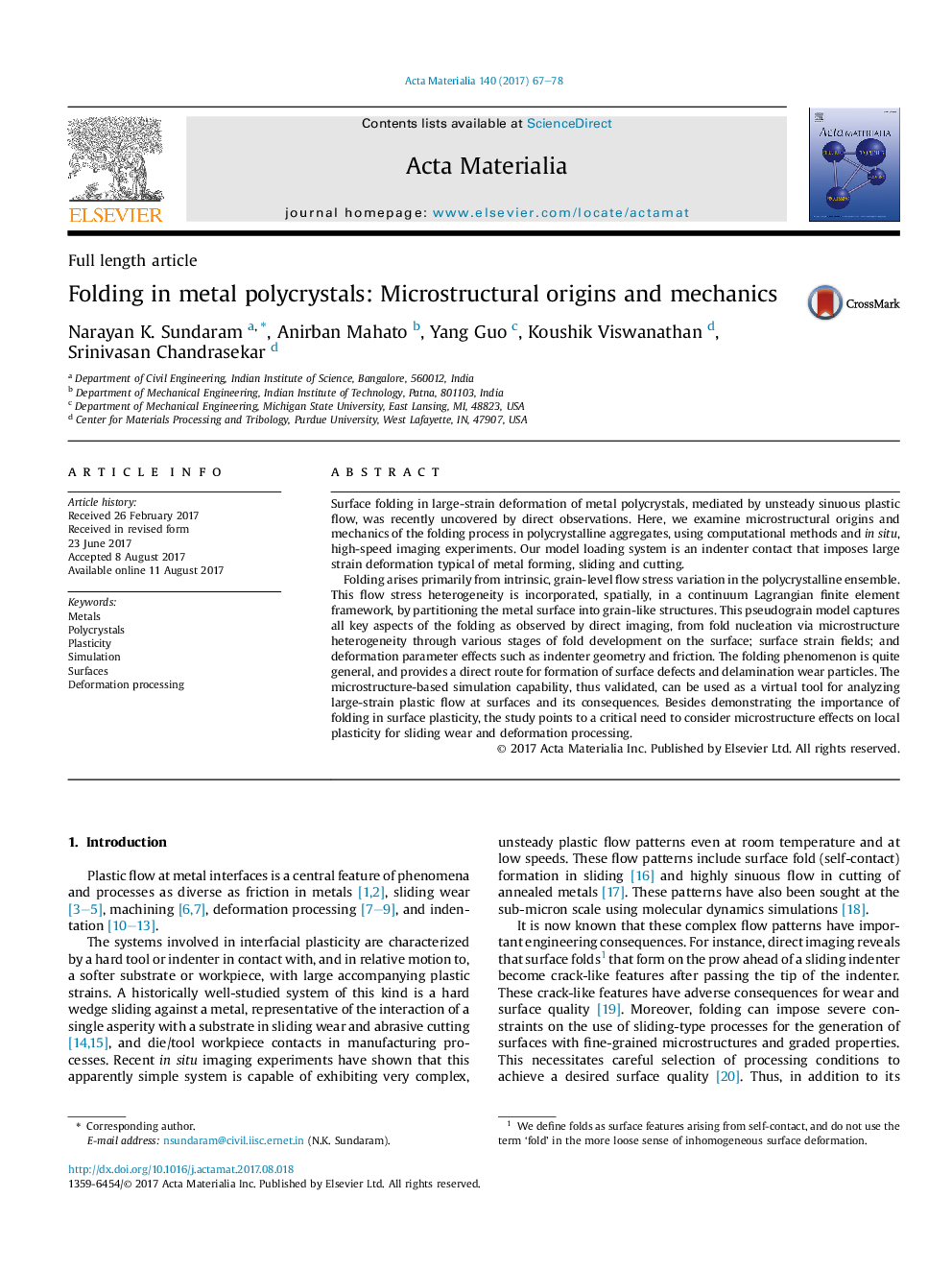| Article ID | Journal | Published Year | Pages | File Type |
|---|---|---|---|---|
| 5435755 | Acta Materialia | 2017 | 12 Pages |
Surface folding in large-strain deformation of metal polycrystals, mediated by unsteady sinuous plastic flow, was recently uncovered by direct observations. Here, we examine microstructural origins and mechanics of the folding process in polycrystalline aggregates, using computational methods and in situ, high-speed imaging experiments. Our model loading system is an indenter contact that imposes large strain deformation typical of metal forming, sliding and cutting.Folding arises primarily from intrinsic, grain-level flow stress variation in the polycrystalline ensemble. This flow stress heterogeneity is incorporated, spatially, in a continuum Lagrangian finite element framework, by partitioning the metal surface into grain-like structures. This pseudograin model captures all key aspects of the folding as observed by direct imaging, from fold nucleation via microstructure heterogeneity through various stages of fold development on the surface; surface strain fields; and deformation parameter effects such as indenter geometry and friction. The folding phenomenon is quite general, and provides a direct route for formation of surface defects and delamination wear particles. The microstructure-based simulation capability, thus validated, can be used as a virtual tool for analyzing large-strain plastic flow at surfaces and its consequences. Besides demonstrating the importance of folding in surface plasticity, the study points to a critical need to consider microstructure effects on local plasticity for sliding wear and deformation processing.
Graphical abstractDownload high-res image (618KB)Download full-size image
